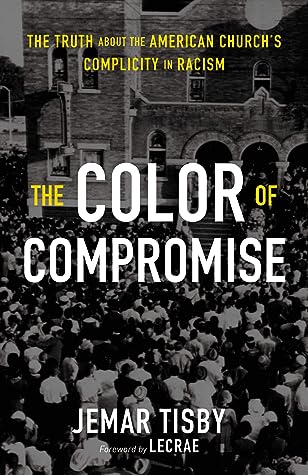More on this book
Community
Kindle Notes & Highlights
by
Jemar Tisby
Read between
November 28, 2020 - February 12, 2021
In spite of all the shortcomings highlighted in this examination of the American church, many of the solutions proposed, solutions that might actually prove effective in changing the status quo, are often dismissed as impractical. Effective remedies to the present state of racial injustice—a situation created by an unbending commitment to ideas of racial superiority and inferiority—are deemed too inconvenient to pursue.
But studying the history of the American church’s compromise with racism should teach us that action is necessary and long overdue. Pioneering black historian John Hope Franklin said, “I think knowing one’s history leads one to act in a more enlightened fashion.” He went on to state, “I cannot imagine how knowing one’s history would not urge one to be an activist.” Those who ...
This highlight has been truncated due to consecutive passage length restrictions.
To be clear, friendships and conversations are necessary, but they are not sufficient to change the racial status quo.
To increase your capacity to fight your own complicity in racism, you can start by increasing your awareness of the issues and the people involved. Although you can expand your awareness in many ways, one particularly fruitful place to start is by reading and learning more about the racial history of the United States. I am concerned that our knowledge about racial justice in this country tends to extend no further than one chapter in a high school social studies textbook.
Some action steps to increase your awareness include the following: • Watch documentaries about the racial history of the United States.4 • Diversify your social media feed by following racial and ethnic minorities and those with different political outlooks than yours. • Access websites and podcasts created by racial and ethnic minorities. • Do an internet search about a particular topic instead of always asking your black friend to explain an issue to you.
A Public Religion Research Institute study revealed that in a one-hundred-friend scenario, white people had just one black friend, one Latinx, and one Asian friend. In that same scenario, black people had eight white friends, two Latinx friends, and zero Asian friends.
The long history of racial segregation in this country coupled with the tendency to associate with those most like ourselves has left all of us in mostly homogenous social networks.
Some action steps to develop interracial relationships include: • Start with the people you know. Most of us know someone of a different race or ethnicity. Have you talked with them specifically about their experiences and perspectives of race and justice? These individuals cannot merely be projects or sources of information. They are real people with whom to pursue a meaningful friendship. Still, it takes intentionality to diversify our social networks, and we should start with those nearest us. • Find new places to hang out. We are creatures of habit and convenience. We go to particular
...more
This highlight has been truncated due to consecutive passage length restrictions.


